This was published 8 years ago
How to avoid crowds of tourists in major cities: The great escape
By Ben Groundwater
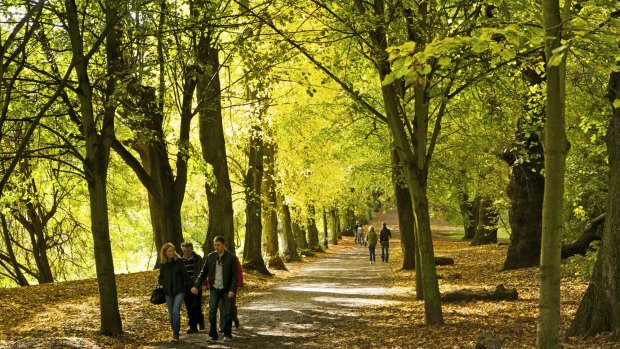
Autumn in Hampstead Heath.
Sometimes, it can seem like they're everywhere. They're eating in every café, drinking in every bar, they're lining up outside every museum, gawking at every monument, bumbling through every metro station, and complaining at every restaurant. They're tourists, and they're taking over the place.
In cities such as Rome, or Paris, or New York, it can sometimes feel as if there aren't any actual residents left – the whole place has been abandoned to the tourist crush, the citizens fleeing in the face of an unrelenting barrage of bum bags and selfie sticks. Even if you have to meekly admit that you're part of their number, that you're one of the gawking masses, tourists, especially too many of them, can be annoying.
You travel to experience other cultures, not other visitors. And yet they can seem impossible to get away from if you want to see a city's highlights, to enjoy its main attractions. But that's just the thing: you don't have to do that. There are ways to avoid the crush of tourists in even the most popular cities, to rediscover that local flavour, to mix with normal people and do normal things – and all you need to do is steer clear of the obvious choices.
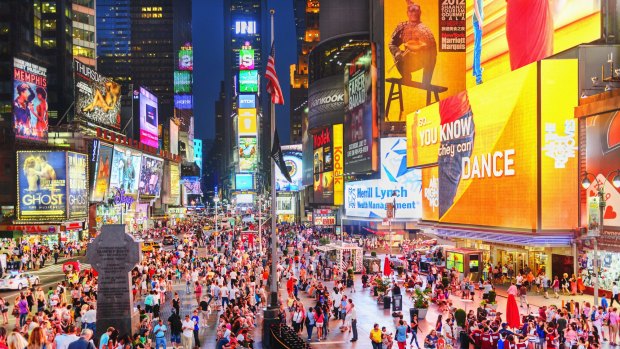
Neon abounds in Times Square, New York.
Paris
WHERE THE TOURISTS GO
It would be easier to list the areas where they don't go – this is one tourist-heavy city. But rest assured that the Eiffel Tower, the Louvre, the Champs-Elysees and Sacre Coeur will all be heaving with gawkers.
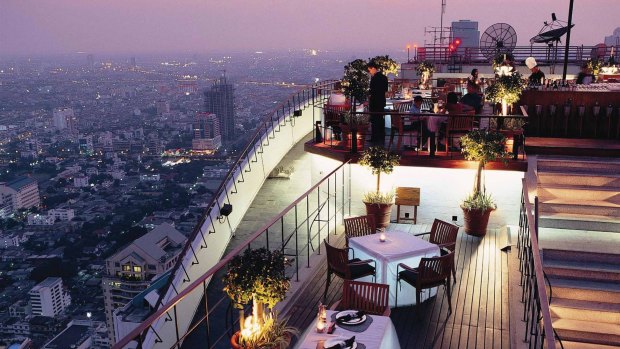
The Vertigo Restaurant in Bangkok.Credit: Christina Pfeiffer
THE ESCAPE PLAN
As busy as Paris is with visitors, there are still hundreds of charming little areas that remain relatively untrampled. In the north-east of the city, around the 11th, 12th and 13th arrondissements, you'll find Bohemian Parisian life at its finest. The Rue Oberkampf is what the Champs-Elysees might be without all of the tourists: a strip of great bars and restaurants, designer clothing stores and antique shops. The 12th arrondissement is home to a great farmers market, the Marche d'Aligre, as well as Parc de Bercy, a huge green space like the Jardin des Tuileries, only without all of the people. For walkers, the Promenade plantee, an elevated walkway that was once a railway track, is a perfect way to see Paris from a different angle. See en.parisinfo.com
WHERE TO STAY
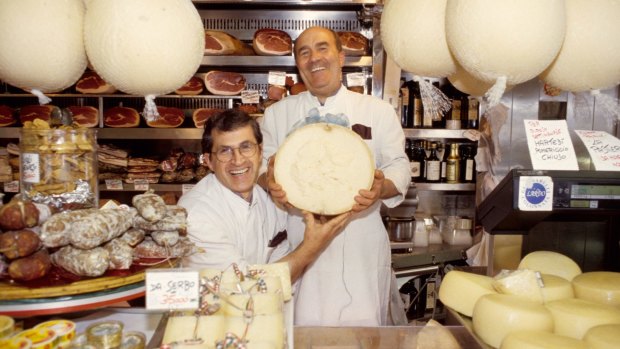
The delicatessen Volpetti, in Rome's Testaccio district. Credit: Alamy
The Hotel Alhambra is a beautiful boutique set near the Oberkampf metro station. Rooms from $113 per night. See www.hotelalhambra.fr
New York City
WHERE THE TOURISTS GO
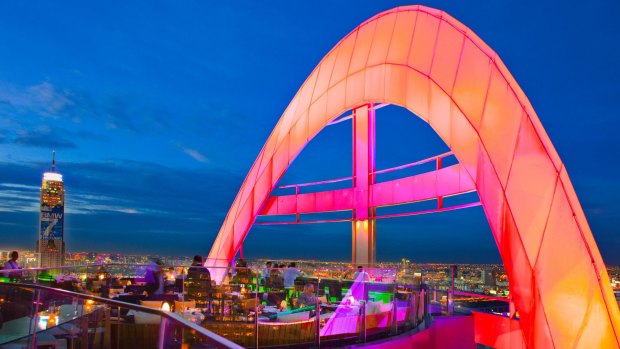
The Red Sky bar is an unforgettable outdoor rooftop venue with impressive views of Bangkok.Credit: Alamy
It's all about Manhattan for most visitors, from Central Park to Fifth Avenue, Wall Street, Times Square, Greenwich Village and Soho.
THE ESCAPE PLAN
Sometimes New York feels like the centre of the whole universe – but if you explore the borough of Queens, you'll start to think it is the whole universe. Queens is the most ethnically diverse area in the world, a place where you can feel like you're in Colombia in the morning, Ethiopia in the afternoon, and the Czech Republic at night – depending on which neighbourhood you've stumbled upon. For lovers of food, Queens is where you want to be. Astoria has great Greek restaurants, as well as Latin American fare. Jackson Heights has Indian food locked down, while Flushing has Chinese and Korean, and Jamaica is self-explanatory. There aren't many big tourist attractions in Queens, but it's a fascinating place to get to know. See mycgo.com
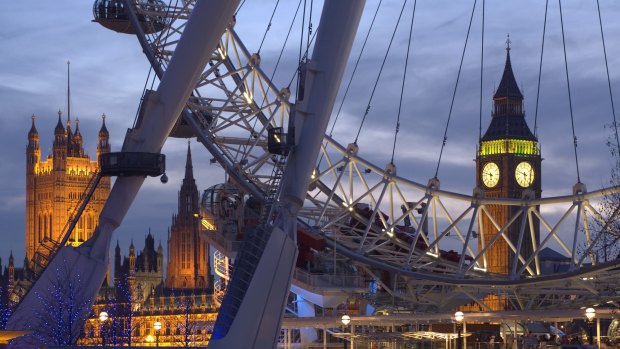
The London Eye with Houses of Parliament in the background.Credit: David Sutherland
WHERE TO STAY
Just near Astoria, Verve Hotel provides easy access to both Queens and Manhattan. Rooms from $120 per night; vervehotel.com.
London
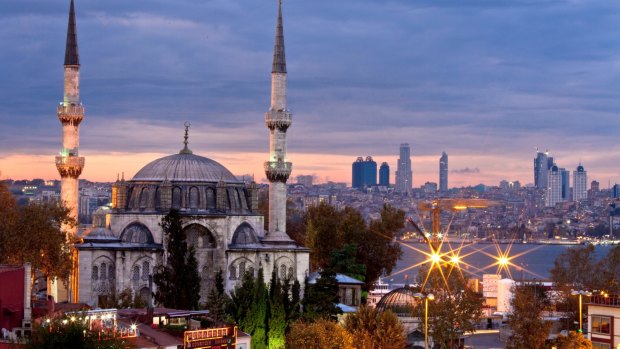
The Blue Mosque in Istanbul.
WHERE THE TOURISTS GO
You'll find the bulk of London's crowds at its free museums – from the Natural History Museum to the Tate Modern, the National Portrait Gallery to the V&A. There are also no shortage of people at the London Eye, the Tower of London and Westminster Abbey.
THE ESCAPE PLAN
Jump on a Victoria Line tube and head to Brixton, perhaps London's most culturally diverse suburb, a place with a huge Afro-Caribbean community, as well as a smattering of just about everyone else. There are none of the traditional tourist attractions in Brixton – no great museums or monuments – which also means there are none of the traditional tourist hordes. Start by wandering the Brixton Markets by day in search of clothes and bric-a-brac, and by night have dinner at one of the many eateries that line the Brixton Village Markets. Another option in London is to spend time in any of its parks, from Hyde to Richmond to Hampstead Heath – all will be filled with locals if the sun is out. See visitlondon.com.
WHERE TO STAY
The Windmill on the Common is a boutique hotel in Clapham, walking distance (or a couple of Tube stops) from Brixton. Rooms from $168 per night. See windmillclapham.co.uk
Bangkok
WHERE THE TOURISTS GO
The traditional spot for backpacker revelry is the seedy area around Khao San Road; however, there are also plenty of "farang", or foreigners, at temples such as Wat Pho and Wat Arun, and the floating market.
THE ESCAPE PLAN
The best way to avoid the touristy crush of Bangkok isn't to go out, but to go up. A spate of rooftop bars, many soaring high on the tops of the city's tallest skyscrapers, has been embraced as much by Bangkok's well-off citizens as its visitors. Octave, on the top of the Marriott in Sukhumvit, is the best of the bunch, towering 45 storeys in the air; however, Vertigo and Moon Bar in Sathorn, Cloud 47 in Silom, and Red Sky in Siam are all favourites. It's not the cheapest way to see Bangkok, but it is one of the most peaceful. Once you're ready to tangle with the streetside madness again, head to Yaowarat for the best local street food. See tourismthailand.org
WHERE TO STAY
The Millennium Hilton Bangkok has rooms overlooking the river from $85 per night – the building is also home to Three Sixty, a rooftop bar. See hilton.com
Dubai
WHERE THE TOURISTS GO
The mega-resorts at the Palm, Dubai Marina, and along Sheikh Zayed Road are a haven for the holidaying masses.
THE ESCAPE PLAN
If there's such thing as a "real Dubai", then if can be found in the old city of Deira. Situated just near the airport but often bypassed by visitors speeding by in their airconditioned taxis, Deira is home not just to Emiratis, but to expats from around the Middle East, everyone from Palestinians to Syrians, Iranians to Yemenis. That cultural blend gives Deira something of a unique atmosphere, and is perfect for anyone tiring of sanitised resort life. While plenty of tourists make it to the gold souk, walk a few blocks to Al Rigga Road to find bustling eateries serving food from across the Middle East. It's a completely different experience. See visitdubai.com
WHERE TO STAY
The Novotel Dubai Deira City Centre is close to both the airport and Deira. Rooms from $95 per night. See accorhotels.com.
Istanbul
WHERE THE TOURISTS GO
The Sultanahmet area is deservedly popular, given it's the home of the Blue Mosque, the Hagia Sophia, Topkapi Palace and the Grand Bazaar.
THE ESCAPE PLAN
Once you tire of Sultanahmet, and the constant entreaties to buy a carpet, you have two choices. The first is to jump on a ferry and head across to Asia – also known as the Istanbul suburb of Uskudar. Officially part of the Asian continent, Uskudar feels like a city unto itself, with a noticeably more Middle Eastern flavour due to its palaces, mosques, and bakeries selling traditional sweets and baklava. The other choice is to head north to trendy Besiktas, where you'll find Istanbul's moneyed types hanging out in some of the city's best restaurants and cafes around Akaretler Caddesi. Nearby there's also Arnavutkoy, a quiet seaside suburb filled with beautiful old mansions. See goturkey.com
WHERE TO STAY
The Istanbul Edition is a hotel set in the Levent neighbourhood, another of the city's trendy enclaves, and close to Arnavutkoy. Rooms from $184. See editionhotels.com/istanbul.
Tokyo
WHERE THE TOURISTS GO
Though Tokyo's immense size means you'll never be engulfed purely by visitors, the bulk of the foreign crowds hang out in the historic area of Asakusa, as well as in Roppongi.
THE ESCAPE PLAN
Take a break from the hustle and bustle by spending a day in Shimokitazawa, a doll's house of a suburb that's just a few stops away from Shinjuku. Everything is small in Shimokita, from the low-rise buildings to the vintage fashion boutiques to the live music venues, bars and restaurants. The suburb has a culture all of its own, an alternative, punky place where record stores nestle in next to theme bars and gaming arcades. At night, head to Ebisu, where numerous laneways offer great choices in bars and restaurants that are free of the tourist hordes. See jnto.go.jp.
WHERE TO STAY
The Westin Tokyo is close by in the suburb of Meguro, walking distance to Ebisu's nightlife. Rooms from $250 per night. See westin-tokyo.co.jp
Barcelona
WHERE THE TOURISTS GO
Barcelona's Gothic Quarter is the epicentre of the city's tourist trade, where you're as likely to find a tacky T-shirt shop or Irish pub as you are a decent tapas bar.
THE ESCAPE PLAN
A couple of metro stops from the crowded Gothic Quarter lies Poble Sec, a suburb that is the antidote to touristy tack. Poble Sec is all about great food, from the pedestrianised Carrer de Blai, a long street filled with bars and restaurants, to the growing number of eateries being opened in the area by the Adria brothers, former owners of the feted El Bulli. For visitors, Poble Sec is the best of both worlds: it's close enough to the Gothic Quarter on one side, and Montjuic, a large area of parkland, on the other side, to be convenient, but far enough away that most tourists won't bother making the journey. Here you'll be able to ever so briefly pretend you're the only tourist in Barcelona. See barcelonaturisme.com.
WHERE TO STAY
The Hotel Barcelona Universal is within walking distance of both Poble Sec and the Gothic Quarter. Rooms from $182 per night. See hotelbarcelonauniversal.com
Amsterdam
WHERE THE TOURISTS GO
The area around Centraal Station is always filled with visitors, as is the red light district nearby. In terms of attractions, the queues are always long at the Anne Frank House and anywhere in the Museum Quarter.
THE ESCAPE PLAN
Wandering the streets of the Jordaan area, it can seem impossible that the tourist crush of the Anne Frank House is just a canal or two away. The Jordaan is very much a local favourite, a place of quiet streets that are lined with art galleries and clothing boutiques, record stores and cafes. Once a working class area, it's now very much gentrified, and is set just far enough from any major tourist attraction to retain its local feel. The best way to spend an evening here is to settle in at one of the "brown bars", traditional old Dutch pubs with wood-panelled walls, to feast on cheap, simple food and a beer or two. And there won't be a buck's party group in sight. Elsewhere, the Albert Cuyp is a street market that's as popular with locals as it is visitors. See iamsterdam.com
WHERE TO STAY
There are very few hotels in the Jordaan itself; however, the Room Mate Aitana is just a short walk away. Rooms from $139 per night. See aitana.room-matehotels.com
Rome
WHERE THE TOURISTS GO
There are few areas of the world more heavily populated with tourists than Rome's Centro Storico, or old centre, which is home to the Pantheon, Piazza Navona, the Trevi Fountain and the Colosseum.
THE ESCAPE PLAN
There are two choices for those who've tired of Rome's tourist crush: Testaccio and Pigneto. Testaccio is foodie heaven, a residential area that's filled with delis, bakeries, cafes and restaurants. It's also the site of Eataly, a four-storey gourmet supermarket where you can pick up everything from cured meats and cheeses to cookbooks and utensils, or eat at one of the multiple restaurants serving some of Rome's best food. Pigneto, meanwhile, is a former working-class suburb that's undergoing a hipster revival. Populated by students and creatives, Pigneto is the sort of place where you'll find speakeasy bars tucked behind sandwich shops, and jazz bands busking on pedestrian malls. And the best part? Pigneto is awkwardly positioned on Rome's public transport map, which makes it very much locals-only. See turismoroma.it
WHERE TO STAY
A Casa a Testaccio offers a very Roman experience, with the chance to stay in a typical apartment building. Rooms from $75 per night. See acasaatestaccio.com
How to jump the queues
Still want to visit the popular attractions? Here are the secrets to avoiding the crowds at 10 major tourist destinations around the globe.
LONDON: TATE MODERN
Entry to the Tate is free, so there's no time to be saved in booking online. However, time your visit right and you'll avoid the crowds – before lunch on any day is good, or late in the evening on Fridays and Saturdays. See tate.org.uk
AMSTERDAM: ANNE FRANK HOUSE
Unless you want to spend half of your holiday in Amsterdam standing around outside this famous museum, book tickets online and you'll be able to skip the huge queues. See annefrank.org
ROME: SISTINE CHAPEL
The Vatican Museum is understandably popular, with long lines the entire day. If you want to sail past all these people wilting in the sun, book your tickets in advance. See museivaticani.va
BANGKOK: GRAND PALACE
The avoid the crowds, you'll have to arrive before the tour groups do – we're talking 8.30am. Once you're in, head to the Temple of the Emerald Buddha first. That's where the crowds will go later. See palaces.thai.net
PARIS: MUSEE D'ORSAY
It's not the Louvre, but it's still extremely busy. You can beat the queues at the Musee d'Orsay, however, by buying tickets online – at musee-orsay.fr/en/home.html – and going to Entrance C, which is dedicated to prepaid ticket holders.
DUBAI: BURJ KHALIFA
There's only one way to visit the observation deck on the world's highest building, and that's to book online (up to four weeks in advance in high season). Not only are online tickets a quarter of the price, but you're guaranteed entry. See burjkhalifa.ae
ISTANBUL: HAGIA SOPHIA
The queues to get into this spectacular edifice are almost as famous as the Hagia Sophia itself; however, if you buy tickets online, and arrive before about 10am, you'll more than likely walk straight in. See ayasofyamuzesi.gov.tr
NEW YORK: MOMA
Invest in a New York Citypass – citypass.com/newyork – and you'll be able to skip the queue not just at MOMA, but at the Empire State Building, the Guggenheim and the Statue of Liberty. See moma.org
TOKYO: SKYTREE
One of Tokyo's most popular attractions, the 450-metre-high observation deck at the Skytree, has ridiculously long queues. Foreign tourists, however, can line up separately for a "Skytree Fast Ticket". It costs more, but will get you to the top sooner. See tokyo-skytree.jp/en/
BARCELONA: LA SAGRADA FAMILIA
It's possible to bypass the huge queues entirely here if you book online. Go to sagradafamilia.org and select your date and time, then just enter through the dedicated entrance at the northern side of the church.
Off the beaten track
Sometimes staying in neighbourhoods were tourists are more rare than common can be a smart bet. Here are some sure-fire strategies for making ti work for you.
WHERE TO STAY
While we've recommended some great hotels here, one of the best ways to stay in an up-and-coming neighbourhood is to use an apartment rental site such as Airbnb. Staying in someone else's home will not only put you in the heart of a suburb, but give you an insight into the way people live in your chosen destination.
WHERE TO EAT
Finding a great restaurant in an undiscovered area is going to take a little research, and a little luck. Local food bloggers are a great source of information, and will probably have reviewed plenty of eateries in your new area (google, for example, "food blogger Rome"). But this is all about discovery, so it's worth simply tramping the streets and picking out places that look interesting.
WHAT TO DO
The great thing about many of these places is that they don't have major tourist attractions – their joys are far subtler, and might take time to appreciate. The trick is to explore on foot, giving yourself the chance to check out the shops, the cafes, the galleries and parks that will inevitably appear. It's also worth asking locals for recommendations; as one of only few visitors, you're likely to be warmly received.
Sign up for the Traveller newsletter
The latest travel news, tips and inspiration delivered to your inbox. Sign up now.